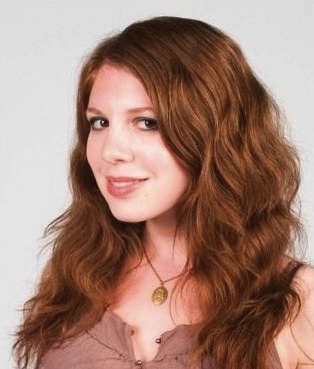For one social strategist, an aspirational touch

 Even as a young child, Lindsay Kaplan was an inveterate multitasker. “I used to read five different books at once,” she recalls. “I'd have them behind my pillows, with a flashlight. And if I got bored with one chapter, I'd stick it down and then pick up a different book.”
Even as a young child, Lindsay Kaplan was an inveterate multitasker. “I used to read five different books at once,” she recalls. “I'd have them behind my pillows, with a flashlight. And if I got bored with one chapter, I'd stick it down and then pick up a different book.”
That habit has followed Kaplan into adulthood, where she calls upon it daily as director of digital strategy at DuJour Media, publisher of an uber-glossy new luxury magazine that closely integrates, print, digital and social media.
“People read five different articles at a time now,” Kaplan says over her steaming Americano in a lower Manhattan cafe located a few blocks from her office, where we have escaped the cold January air. “People are sharing five different ways. People are emailing their mom an article, and then they're posting a gallery on Facebook, and then they're tweeting a quote that they read. And then they're checking in on Foursquare and leaving a tip. And everybody is experiencing and sharing and multitasking in a way that they have never done before.”
While some critics suggest this sort of behavior is just another form of attention deficit disorder, Kaplan believes our culture's new consumption habits are forcing the quality of content to improve.
“Because your life is so cluttered," she says over her Americano, "and you check back on your news feed and fifty articles were posted in the last half hour, content has to be good to stick out. You don't have a choice. Mediocrity has no place on the Internet anymore.”
DuJour magazine aspires to be far more than mediocre. It debuted last fall based on the premise that upscale media, in the style of glossy magazines like W and Vanity Fair, can have a prominent place in the digital world. Recent issues boast interviews with exclusive New York designer Anna Sui and Grammy-winning rhythm and blues singer Usher. Or stories featuring "detox" spas, resorts and getaways sporting pricetags meant for the rich and famous among its readership.
Through a partnership with the upscale web merchant Gilt, the magazine arrives monthly via an interactive digital copy to Gilt Groupe's two million most affluent members. An oversized glossy magazine mails quarterly to 250,000 hand-picked readers, who (big breath here) can claim a net worth of more than $5 million, own a home worth at least $1.5 million, and spend more than $10,000 a year online. 15,000 print copies are delivered to news stands, where they sell for $7 per copy.
Each print edition costs the company $10 to produce -- but by its July inaugural issue, DuJour already boasted a profit, with more than 100 sponsors paying an average of $42,000 an ad.
In addition to acting as the point person in DuJour's relationship with Gilt, Kaplan spends most days curating the magazine's online image.
How does one cater to high-income readers with social media? Kaplan says she takes a nod from the image-heavy social media campaigns of luxury brands. That means fewer banner ads and a much deeper focus on high-quality, aspirational imagery.
“If you look at Facebook,” she says, “really beautiful photo albums have been always compelling.
I think because it's less about extraneous conversation, and more about sharing the essence of the brand. So rather than creating the conversation and partaking in it, you're allowing the conversation to form around your brand.”
Kaplan has adapted that approach to fit DuJour's journalistic mission. “To me what we're trying to do is ensure that because we are a content company, a luxury magazine not a luxury brand, we are engaging with users. We are listening, and we're not just speaking to be heard. We're also speaking to spark conversation.”
That conversation manifests itself in the way readers share DuJour articles and galleries. The online magazine lacks comments sections, instead encouraging content sharing on social media sites. Kaplan closely monitors which pieces are shared, who shares them, and which sites drive the most activity. She relays that information to the editorial staff on an ongoing basis, which uses it to shape future content decisions.
“A few years ago, you could just push content out, and people would read it," she continues, setting down her cup. "And these days, social's not about pushing content out, it's about engaging, and the content itself has to pull. What we're looking for is for someone to love an article so much that they want to share it with their network, and they want to tell their network that it's beautiful.”
Kaplan originally intended to become a writer herself. But while temping post-graduation at a publishing company, she had a fateful conversation with the publisher's head of publicity.
“We talked for over half an hour,” she remembers, “and we had this great banter. And he said, 'What do you want to do?' And I said, 'Editorial.' And he laughed. And he said, 'You talk too much to ever do editorial, do you really want to sit at a desk all day and just write?''' Thus, Kaplan was reborn as a publicist.
She went on to manage communications at Time Out New York, launching the magazine's first social media platforms. From there, Kaplan managed social media at Elle, where she first began to explore how social media could be used to define a luxury publication.
“I think the challenge,” she says as she leans into the table, “is how does a luxury brand, which has always been on a pedestal, engage with people of all walks of life? And how does a brand remain aspirational, but also accessible. That's the challenge.”
SInce Kaplan left Elle in 2010, social media has recreated the way people consume general media - in many ways for the better, she believes.
“Everybody has become their own editor,” she says. “We are in this interesting time in the Internet, where people feel pride about what they post, and everybody feels accountable for their opinions, for what they're endorsing. And I think sharing has gotten much more thoughtful over the last year. People voicing their opinion about the election, sharing articles about the fiscal cliff. I have noticed the conversation on Facebook get more intelligent, I think quality tends to emerge in the series of noise.”
As the waiter takes our bill, I pause to ask Kaplan whether she ever tires of living amid such frenetic input of information.
“It keeps my knives sharp,” she answers without pause. For Kaplan, our era's plethora of content not only hones the quality of media, but her own mind as well.
This post was originally published on Smartplanet.com